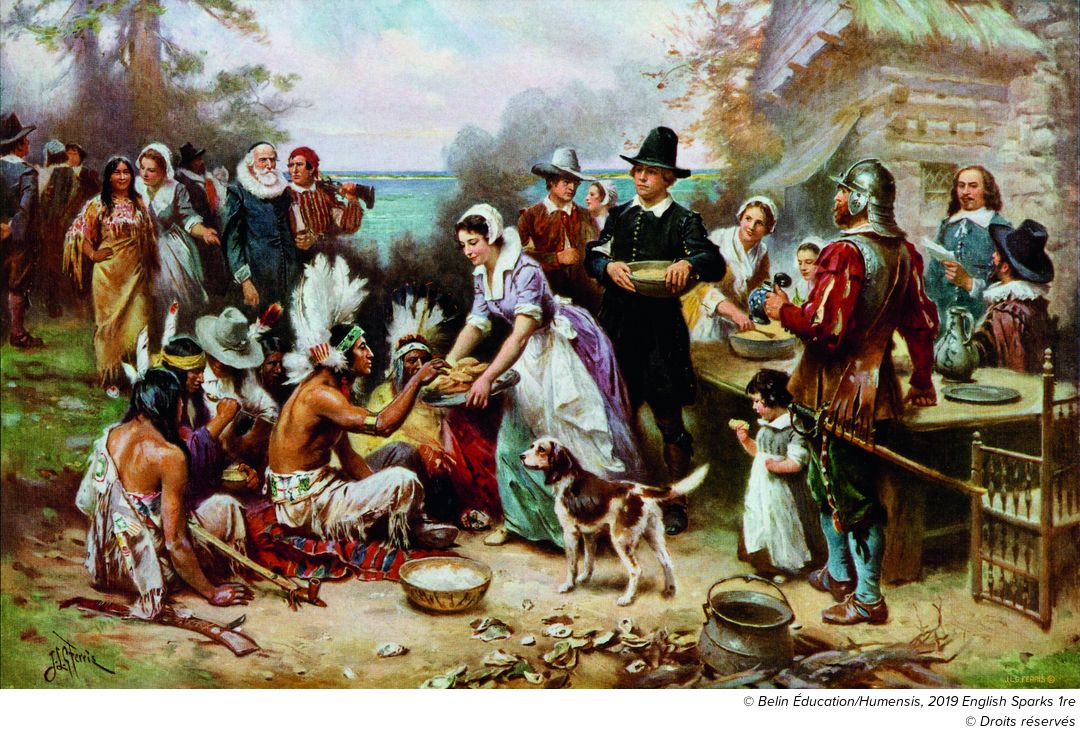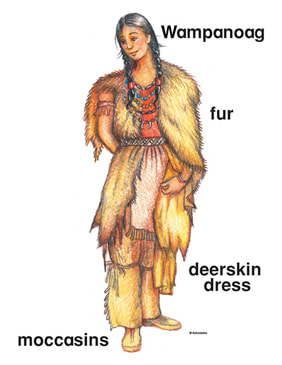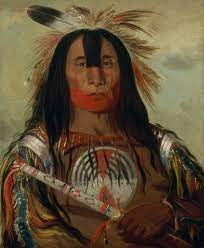How did the artist picture the 1621 celebrations, and how did he convey his ideas of the event?The painter Jean Leon Gerome Ferris was a 19th-century painter. He was known for painting scenes from American history. He was born in Philadelphia in 1863, and he painted 78 depictions of significant moments in American history. Ferris was referred to at the time as a “painter historian.” His paintings and illustrations depicted notorious [noteworthy] moments in U.S. history, such as when William Penn was greeted [welcomed] by friendly Indigenous people, shown in The Landing of William Penn — 1682. Description and Analysis of the Painting More than any other representation of Thanksgiving, Jean Leon Gerome Ferris’s 1912 painting, The First Thanksgiving, 1621, captures the modern, idealised view of English settlers and Native Americans celebrating their first harvest feast in friendship. The celebratory image depicts the superiority of the new arrivals over the locals. According to the legend, when the first British settlers (mostly Puritans) arrived in North America (Plymouth colony) half of them died of starvation. So, Native Americans taught them how to grow vegetables and other plants that were unknown to Europeans. The Wampanoag helped the Pilgrims obtain food. They taught them to grow crops and showed them the best places to fish. A year later, it is thought that the settlers shared their first harvest with the Native Americans to show them their gratitude. The painting expresses a joyful and peaceful atmosphere. One woman is smoking the peace pipe. However, there is something quite striking or shocking about the whole scene. Indeed, The Indians are sitting down – kneeling down as to beg for food – whereas the settlers are standing up. The Indians are placed on the same footing as the dog – a spaniel [it is known that one arrived on the Mayflower]- and the children. The picture’s message is quite clear: New World men are equal in development to Old World children and animals. The Amerindians are infantilised. It is as if they could not take care of themselves and had to rely on the European settlers. ConclusionTo some extent it can be said that this painting portrays the settlers in a rather positive light. The painting was made in 1915 to legitimize the pilgrims’ behaviour of the past towards the Native Americans, and find justification for the glory of Thanksgiving.
Contrary to the Thanksgiving myth, the Pilgrim-Wampanoag encounter was no first-contact meeting. Rather, it followed a string of bloody episodes since 1524 in which European explorers seized Wampanoags to be sold into overseas slavery or to be trained as interpreters and guides.
2 Commentaires
Anna
11/30/2023 05:47:00 pm
Thank you very much Teddy, you saved our presentation for our english class. Your web is very magical : YOU ARE THE BEST, WE LOVE YOU TEDDY.
Répondre
eric
12/1/2023 05:24:42 am
im hip without him i wouldn't be able to do my art presentation
Répondre
Laisser un réponse. |
AuteurTeddy Barbier RechercherCivilisations anglophonesToutes les leçons de civilisations | cliquez-ici
Retour à l'accueil |
This Subnav section below will appear under menu item (enter name of menu item):
Lycée
|
|
Ressources pour professeurs
Exemple ci-dessous
| |||||||
This Subnav section below will appear under menu item (enter name of menu item):
This Subnav section below will appear under menu item (enter name of menu item):
GRAMMAIRE
Grammaire et langue anglaise
• Accéder au cours de grammaire anglaise en ligne.
• Télécharger les fiches de grammaire anglaise.
•Accéder aux exercices sur les temps de bases en anglais.
• Accéder aux cours de linguistique [compléments qui aident à mieux comprendre le système de l'anglais]
• Accéder aux cours de linguistique [compléments qui aident à mieux comprendre le système de l'anglais]
• Télécharger les fiches de grammaire anglaise.
•Accéder aux exercices sur les temps de bases en anglais.
• Accéder aux cours de linguistique [compléments qui aident à mieux comprendre le système de l'anglais]
• Accéder aux cours de linguistique [compléments qui aident à mieux comprendre le système de l'anglais]
Cliquez ici pour modifier.
This Subnav section below will appear under menu item (enter name of menu item):
PHONOLOGIE
Phonologie et prononciation de l'anglais
Améliorer sa prononciation avec les cours de phonologie adaptées et ludiques. Les étudiants et professeur trouveront également des ressources plus détaillées.
• Cliquez-ici pour accéder aux différents chapitres de phonologie.
• Télécharger les fiches cours de phonologie anglaise.
You will also find lessons about the different dialects and varieties of English.
• Télécharger les fiches cours de phonologie anglaise.
You will also find lessons about the different dialects and varieties of English.
This Subnav section below will appear under menu item (enter name of menu item):
LINGUISTIQUE
Linguistique de l'anglais
Linguistics is the scientific study of language. Linguistics is concerned with the nature of language and communication, and with the study of particular languages and dialects. It includes many subareas / fields of research : grammar, phonology, syntax, morphology, etc.. In this section you will find a lot of lessons regarding linguistics.
This Subnav section below will appear under menu item (enter name of menu item):
CULTURE
Civilisations et littératures anglophones
This Subnav section below will appear under menu item (enter name of menu item):
VOCABULAIRE
Vocabulaire et enrichir son lexique anglais pour mieux parler
This Subnav section below will appear under menu item (enter name of menu item):
AUTRES
This Subnav section below will appear under menu item (enter name of menu item):
MEMBERS
|
|
|



